What Are Dental Onlays?
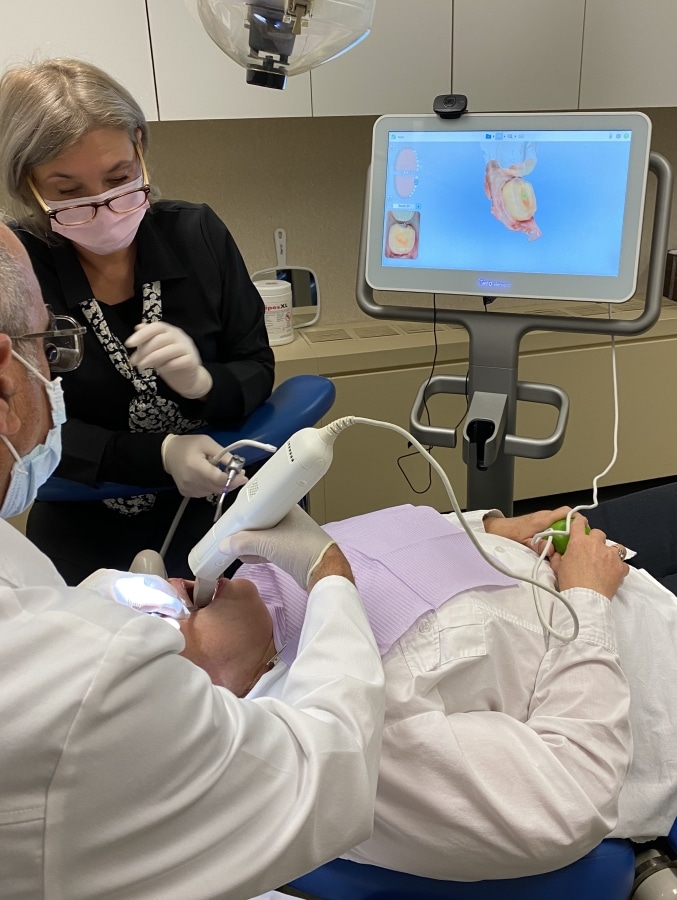
You’ve come to our office for your cleaning and examination appointment, where we’ve gathered all the information we need for Dr. Slepchik to prepare your specific dental treatment plan. We must also consider how we get to the final result when choosing what treatment to do. When we see teeth with cuspal breakdown, there are two options: a crown or an onlay. Your cusps are the main contribution to chewing; if they are broken down or weakened, they must be reinforced and strengthened.
We could describe a dental onlay as a type of filling for a damaged tooth. However, this type of restoration is in a class of its own because it is not placed directly in a cavity like a standard filling. Onlays are custom-made restorations that are carved out of ceramic or porcelain material to fit over one or more cusps of a tooth. The cusps are the high points that are situated at each corner of a tooth. Preserving or restoring cusps is important because they play an integral role in chewing. Onlays are made in our dental lab using impressions from the damaged tooth and are bonded to the tooth in the next visit.
What Are The Benefits Of Dental Onlays?
Dental onlay treatment is recommended for patients because it is a conservative approach to restoring teeth. An onlay outperforms a standard, direct filling because it is customized to recreate nearly 100 percent of the tooth's natural strength before the injury or decay. At the same time, an onlay achieves excellent results without requiring extensive modification of the natural tooth. This conservative approach reduces the risk of nerve irritation in the tooth, which could lead to ongoing pain. Unlike a direct metal deep filling, there is virtually no chance of extra space existing between the restoration and the tooth material.
When Are Dental Onlays Recommended?
A dental onlay may be recommended if a tooth has sustained damage that extends over one of its corners. This is referred to as cuspal replacement. Onlays can replace old amalgam fillings that have cracked or lost integrity, as naturally happens over time. Sometimes, the decay is extensive and requires more coverage to protect the tooth.
What Are Onlays Made Of?
Dental onlays are made from dental porcelain. The impression is taken here in our office using our Itero, which links directly to our dental laboratory. The lab takes about two weeks to make it after the preparation appointment. You return to our office, and the onlay is permanently cemented in your mouth. Dental porcelain is also extremely durable and looks just like a natural tooth.
The Dental Onlay Procedure
If a dental exam reveals tooth damage, Dr. Slepchik evaluates the extent of it so the most suitable repair can be made. Your options are fully explained to you and shown on the intra-oral camera, allowing you to make a confident decision regarding the care that will provide you with the best outcome.
To prep the tooth for its new restoration, the minor reduction will be performed using an anesthetic. Reduction only removes the part of the tooth that has been damaged. An impression is then taken with Itero, our computerized impression system that links directly to our lab. This will be used to create a tooth model that will guide the new onlay. A temporary restoration is performed on the tooth, and the models and specifications are sent to our dental lab.
A second visit is needed to bond your onlay to the tooth. After removing the temporary and any dental cement that has adhered to the tooth, the onlay is set into place. A few assessments are conducted to ensure the onlay is well-situated on the tooth and fits naturally against the opposing tooth when you bite down. Once all aspects of the onlay are satisfactory, a bonding material is applied and hardened with a high-intensity light.
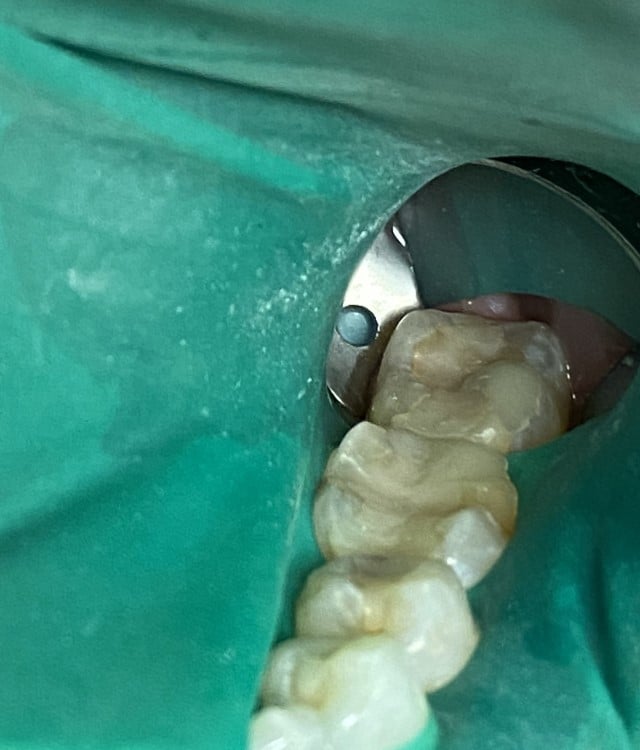
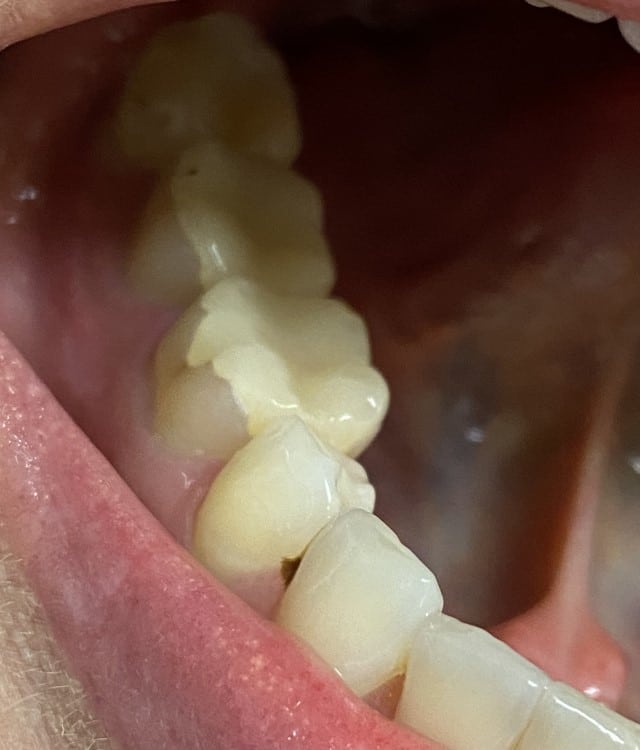
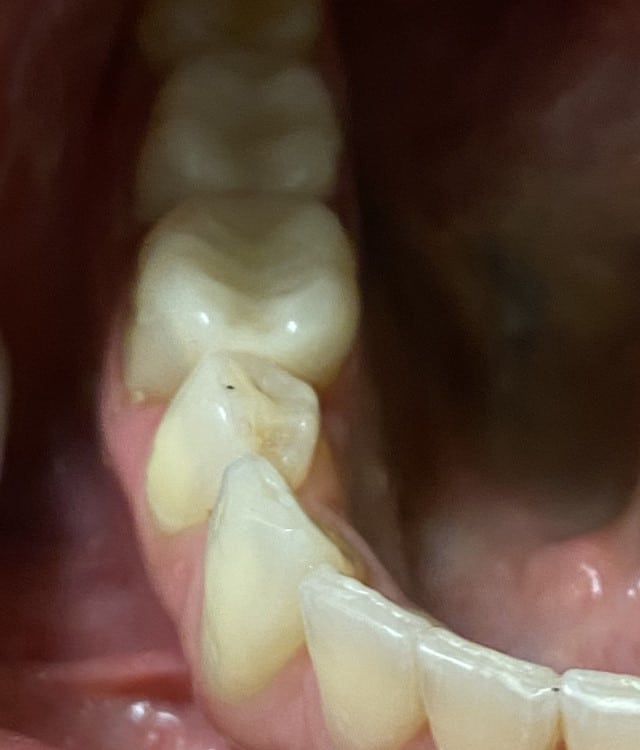
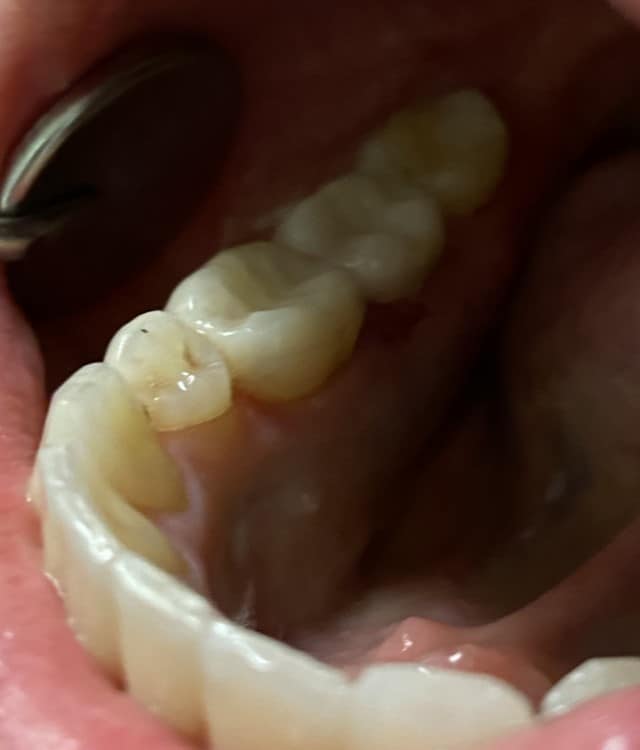
Before & After Dental Onlays
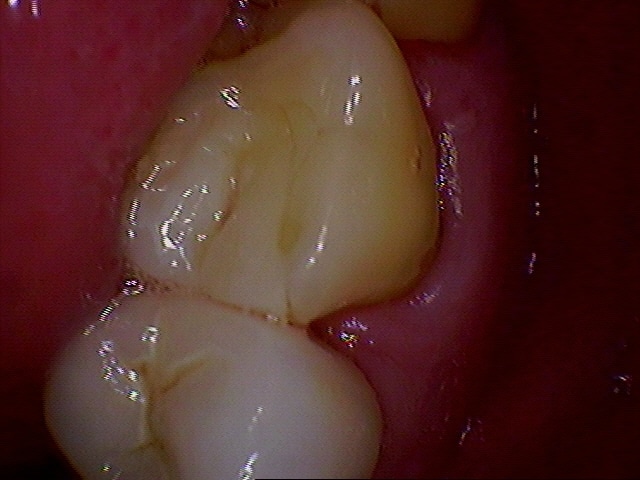
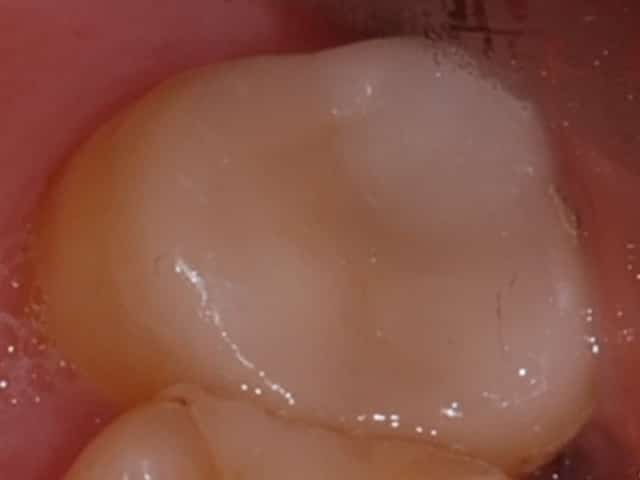
What’s The Difference Between Dental Onlays And Dental Crowns?
The primary difference between an onlay and a dental crown is that one fits onto a tooth's top and side part, and the other covers the tooth entirely. Crowns used to be considered the gold standard when extensive restoration was necessary. However, now, more dentists and their patients are choosing onlays. The reason is that onlay treatment is a more conservative approach than a dental crown. Removing a large portion of the natural tooth structure is necessary to place a crown. An onlay only requires that the damaged enamel be removed.
Fitted over only the upper aspect of the tooth, an onlay is bonded into place. The bonding process creates tight margins that bacteria cannot penetrate. There is no soft tissue around the onlay as there is around the gumline margins of a crown. Because gum tissue may become inflamed and recede away from the crown, there is a slight risk of infection at some point.
Both crowns and onlays look just exactly like a natural tooth. Both have a comparable life span.
How Long Do Onlays Last?
A dental onlay can last 10 to 15 years or more. The lifetime of an onlay may be affected by many factors, such as where it is in the mouth and how you take care of your mouth at home. Do you keep your cleaning appointments with your hygienist according to your specific dental regimen after treatment? All these factors affect how long any dental procedure will last.
What Do Dental Onlays Look Like?
Once an onlay is in place, it will look like your natural teeth. Dr. Slepchik will consider the surrounding teeth's colour, size, shape, etc., to ensure they match.
Maintaining Your Onlays
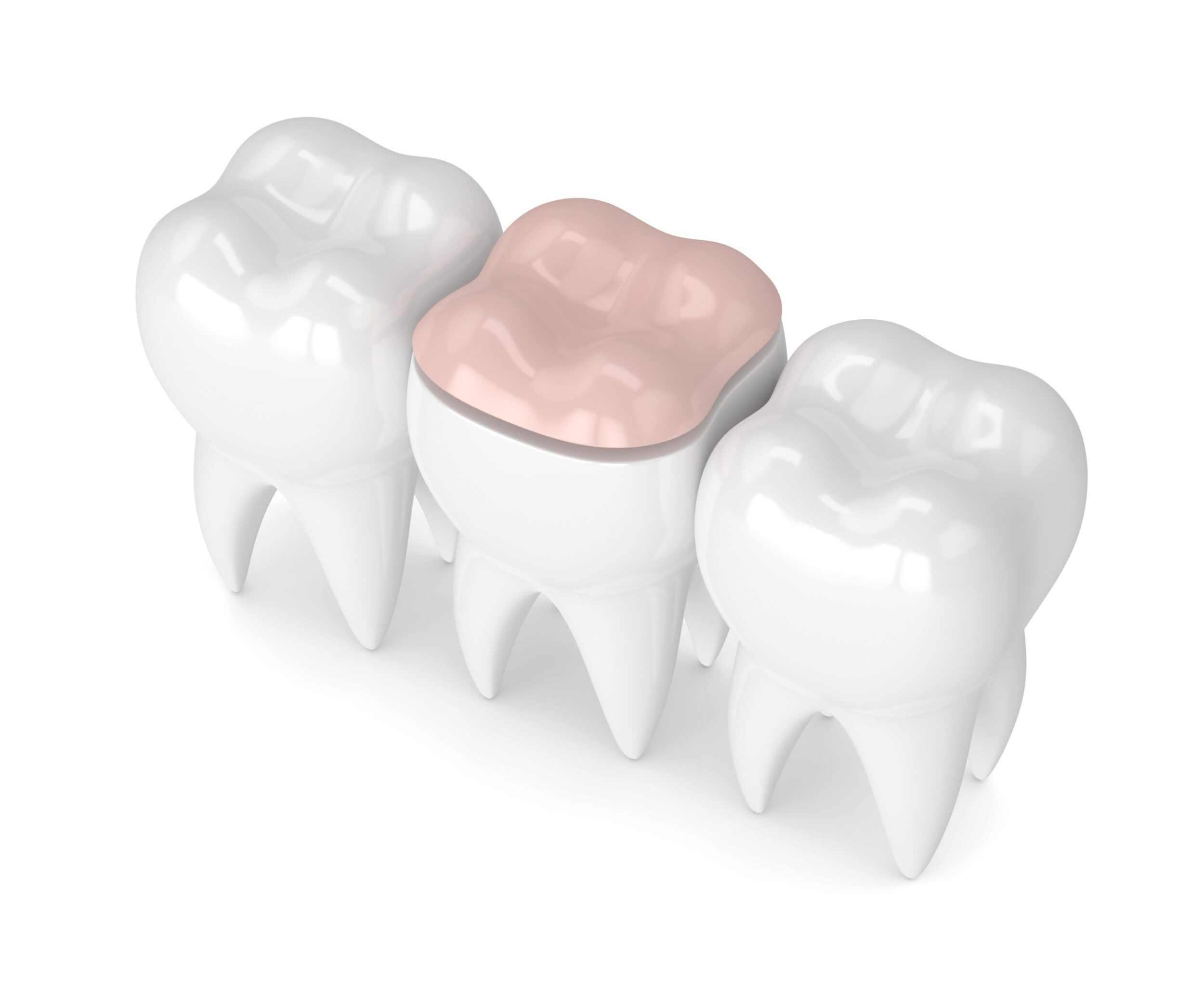
Onlays are a strong and stable option for minimal tooth reconstruction. Regular daily brushing and flossing, as well as your dental examination and cleaning appointments, must be continued after the procedure is complete.
Alternatives To Dental Onlays
Patients may consider a dental filling or crown as an alternative to an onlay. Each has advantages and disadvantages. Fillings may repair teeth in a single visit. However, the application technique is generally less durable and long-lasting than an onlay. A dental crown can provide substantial coverage for a tooth but requires more enamel reduction than is necessary with an onlay. During your visit, we are happy to discuss all appropriate treatment options based on the damage your tooth has sustained.
Are There Risks To Getting Dental Onlays?
It is uncommon to experience complications from a dental onlay. However, this procedure carries similarly minimal risks to dental crowns and fillings. There is the potential for an allergic reaction to the dental anesthetic. If you’ve had a cavity filled in the past and tolerated the anesthetic injection without any reaction, you can feel confident getting your dental onlay. There is a risk of prolonged sensitivity in the treated tooth, though this side effect usually lasts only a week or two. Because our onlays are made with high-quality dental porcelain, there is no risk of allergy to the restoration itself. However, there is a risk that the porcelain could crack. Taking good care of your teeth and not chewing hard foods or objects can help prevent this.
Can I Eat Normally With Dental Onlays?
Yes. Once your final onlay is bonded to the tooth, you can expect to resume eating normally. The onlay is made to fit into the tooth and is secured with a strong bonding material. Its shape provides structural integrity to the tooth so it can withstand the normal chewing force.
Are Dental Onlays Right For Me?
A dental onlay is a good repair treatment option that falls between a filling and a crown. Receiving a crown would require reducing a fair amount of the tooth. This is necessary to allow the crown to fit over the tooth to the gumline. A dental onlay provides just the right amount of repair to fortify the tooth for normal chewing without unnecessary reduction.
How Do Onlays Differ From Inlays?
Inlays and onlays are considered indirect fillings. This means they are made outside the mouth, similar to a dental crown. Each is made to fit the particular size and shape of a cavity. Inlays and onlays are each used on molars and premolars to repair damage that is too extensive for a traditional filling but not significant enough for a dental crown. The primary difference between the two is the part and amount of the tooth they cover. Molars and premolars have cusps, slightly raised areas located at the corners and edges of the chewing surface of teeth. A dental inlay is made to fit within the cusps of a tooth. An onlay is made to fit into the biting surface as well as over one or more cusps that have been damaged.
Is The Procedure Painful?
The dental onlay procedure is not much different from a cavity appointment. The dentist numbs the tooth before removing the damaged enamel so you do not experience any pain. As the tooth is being prepared for its onlay, you may feel a slight pressure on your jaw. Dr. Slepchik works gently and methodically to prepare the tooth without excessive drilling and force. He makes sure that patients are not uncomfortable during the procedure using precise techniques and local anesthetic. After the tooth has been prepared, minor sensitivity may occur. This usually resolves soon after the final restoration is bonded to the tooth, if not before.
What Is The Long-Term Outcome For Most People?
Dental porcelain has been extremely strong and durable for many years. Studies estimate that between 71 and 98 percent of porcelain onlays remain functional for five or more years. A porcelain onlay can last well over 15 years with good oral care.
Schedule A Consultation
To learn more about Dental Onlays or to schedule a consultation, call Dr. Lenny Slepchik's downtown Montreal office at 514-875-7971, email us at reception@smilesbydrslepchik.com, or click here to send us a contact form. We are located in Downtown Montreal, next to the Fairmont Queen Elizabeth Hotel across from Place Ville Marie. Metro McGill or Metro Bonaventure.
